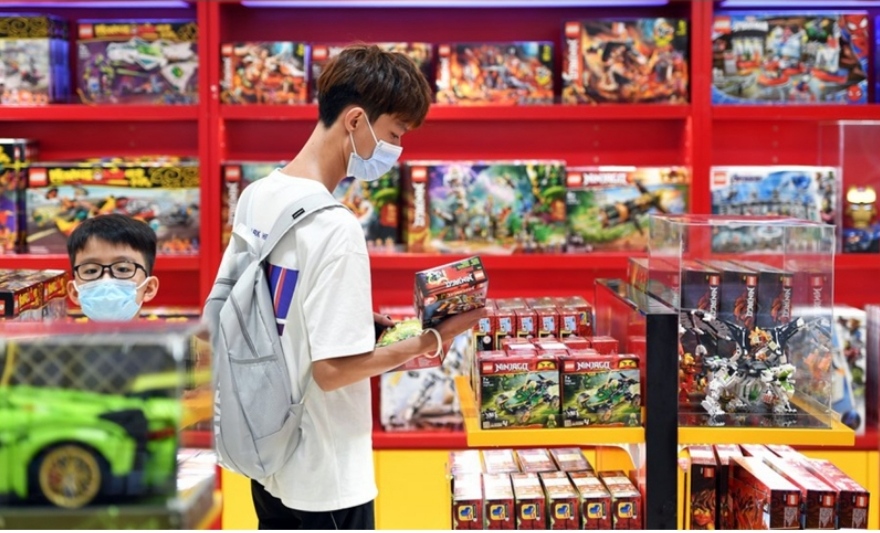China’s consumption slowdown signals huge challenges

The growth of China’s retail sales, a key economic indicator, slowed down significantly in August as the latest coronavirus flare-up and extreme weather conditions constrained consumption during the summer vacation, according to official data on Wednesday, underscoring lingering challenges and uncertainties for the country’s economic recovery.
Uncertain factors like the given the latest COVID-19 outbreaks in East China’s Fujian Province, combined with slow down in export to USA, Canada, Australia and Western Europe and drop in trade with India are other unfavorable conditions which will hinder stable economic recovery for the rest of the year along with reduced rate of domestic consumption.
The country’s retail sales stood at 3.44 trillion yuan ($534 billion) in August, down 6 percentage points from the 8.5 percent growth in July, as per data from the National Bureau of Statistics (NBS).
NBS spokesperson Fu Linghui said at a press briefing on Wednesday that new COVID-19 case spikes and flooding in parts of the country affected travel, and dragged down consumption during summer holidays.
Fu also attributed the slowdown in consumption to a higher comparison base in the previous month. In August 2020, the country’s retail sales grew 0.5 percent year-on-year – expansion for the first-time since last year.
The unexpected ease in retail sales growth underscored that consumption is “the biggest weakness” of China’s economic recovery from the COVID-19, said Wang Jun, a member of the academic committee at the China Center for International Economic Exchanges and chief economist with Zhongyuan Bank.
Due to sporadic case spikes in regions including South China’s Guangdong, East China’s Jiangsu Province as well as the latest outbreak in Fujian, the recovery of China’s consumption sector, especially across services, has been below market expectations since the beginning of 2021.
To boost domestic consumption under the “dual circulation” strategy, the Chinese government has launched a series of sales promotion events, ranging from a month-long national shopping festival in May, to first China International Consumer Products Expo held in Haikou, South China’s Hainan Province and the China International Fair for Trade in Services held in Beijing in September.
However, the overall recovering trend in consumption has not changed and the consumption environment will be improved as the broad economic recovery continues and the COVID-19 remains largely under control, Fu noted.
Even with a population of 1.4 billion, a middle-class population of 400 million and per capita of over $10,000, and a huge market advantage China is not sure of consumption growth and consumption upgrade.
Meanwhile, the Government is desperately trying to control Unemployment, and reduced resident income increase and comparatively fast-growing corporate profit. The main aim is to have a stronger consumption capacity.
NBS data showed that the country added 9.38 million new jobs in the first eight months of the year, thus unable to achieve the official target for the year. In August, the country’s unemployment rate remained at 5.1 percent.
Only If the latest outbreak in [East China’s] Fujian Province could be effectively controlled by the end of September, there will be tourism rebound during the seven-day National Day holidays, but there may not be sharp bounce,” said an expert.
Consumption has become a major driver of domestic economic growth since 2008, and will play a larger role in the future given policy boost, Cong said, referring to proposals to focus on facilitating innovative and high-end consumption during the 14th Five-Year Plan period (2021-25), for example, new-energy vehicle consumption and the development of international consumption centers in cities including Beijing, Shanghai and Guangzhou in Guangdong Province.
“The GDP growth in the third quarter may register below 6 percent,” predicted an analyst, warning the fourth quarter economic growth may also cool because of potential slowdown in exports when overseas consumption demand shifts to outdoor entertainment.




